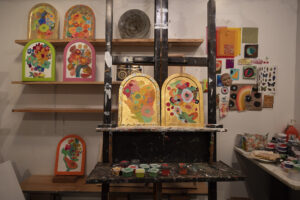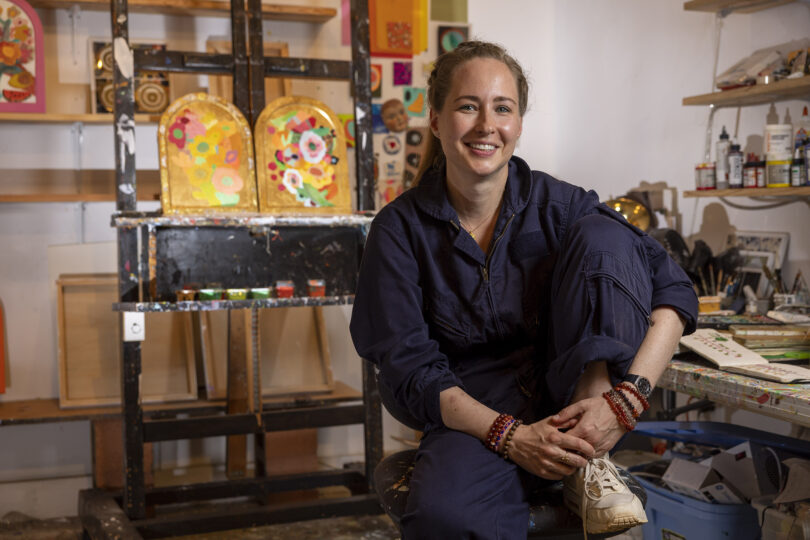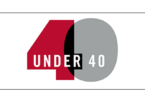Zuzka Vaclavik has called Athens home since she came to UGA in 2005. But the painter recently heard a term that she’s quickly applied to herself.
Third Culture Kid.
“It’s when your home culture is different than the one you grew up in,” says Vaclavik MFA ’08, whose parents escaped the Iron Curtain before she was born. “And you’ve lived in other places and you recognize their culture in yourself, but you don’t ever quite belong anywhere. And I really feel that.”
Vaclavik has lived, painted, and taught around the world. She speaks English, Slovak, and German fluently and Spanish and Italian conversationally. She’s presented her work at dozens of shows in Europe, Southeast Asia, and across the U.S. And Vaclavik’s paintings can also be found in the Central Library in Atlanta as well as in the High Museum of Art’s permanent collection.
The search for one’s identity is central to any artist’s work, and Vaclavik’s story begins with intrigue.
In the early 1980s, Vaclavik’s parents defected from what was then Czechoslovakia to Austria, crossing the border by bribing the guards with a carton of Marlboros. They made their way to the U.S.—Zuzka was born in Virginia—before returning to Europe and settling in Germany.

Zuzka Vaclavik’s exhibition, “Sanctuary,” will be on display at the Smithsonian-affiliated National Czech and Slovak Museum and Library from Sept. 16 to Dec. 31. Vaclavik painted all of the works that will be on display in her Athens studio. (Photo by Peter Frey/UGA)
Vaclavik was just a toddler when she discovered her love of art.
She started by coloring with crayons and markers on the underside of a table. More formal instruction followed. Her parents connected with a Czech expat artist who taught her on the weekends.
When she reached middle school, the family returned to the States with Vaclavik well on her way to a career as an artist.
Her father’s engineering career took them from Florida to Minnesota to Texas, and Vaclavik eventually earned her art degree from the University of Texas at Austin. She followed that up by moving to Phnom Penh, Cambodia. The move inspired her, and Phnom Penh is where Vaclavik presented her first solo exhibition, Tales of Impermanence.
During that exhibition, Vaclavik decided to return to the States and began researching graduate art programs. She came to Georgia, sight unseen, and—in contrast to her first 20-odd, nomadic years—settled down.
“Athens is a very supportive community. The artists support each other, and it doesn’t have the stressors of big cities,” Vaclavik says. “I have the energy to create.”
After earning her master’s in painting, Vaclavik continued teaching in the Lamar Dodd School of Art and has taught in UGA’s program in Cortona, Italy.
Vaclavik’s studio in the Chase Park Warehouses is ringed with brightly colored canvases, big and small, and a variety of ceramic cups and bowls. Vaclavik began working with clay a few years ago and loves the physical and communal aspect of it. She’s also adorned several wood panels with florals; they almost resemble stained glass windows in a cathedral.
Those pieces are the focal point of Sanctuary, an upcoming solo exhibition that will run Sept. 16 through Dec. 31 at the Smithsonian-affiliated National Czech and Slovak Museum and Library in Cedar Rapids, Iowa.
The style of the paintings takes its inspiration from traditional Slovakian folk crafts, and their creation has been not just a labor of love for Vaclavik but also an opportunity for introspection.
“I was thinking it’s like a personal sanctuary,” says Vaclavik, who still has many family members in Slovakia and visits often. “It’s like the third culture thing. Where is your home? Where do you belong? That’s something a lot of people can relate to. Ultimately, the sanctuary is what you find inside yourself.”
Vaclavik pauses to consider the description she’s just delivered.
“As cheesy as that sounds,” she laughs.







